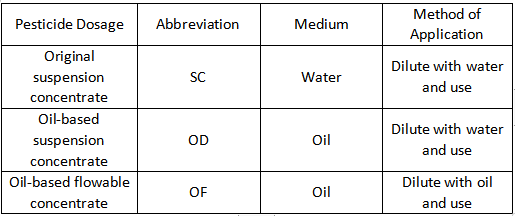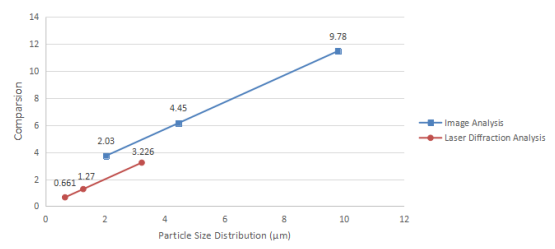Application of Laser Diffraction to determine the Particle Size of Oil-based Suspension Pesticides
2020-10-16Application Briefs
What are oil-based suspension pesticides?
In the production of pesticides it is important to choose the appropriate dosage necessary. This is determined after full investigation of both the physical and chemical properties of the ingredients. An oil based suspension contains solid active ingredients dispersed in oil phase. The oil can vary from vegetable, paraffin, methylated seed or aromatic solvent types.
Normally, pesticide dosage is influenced by the emulsifiable concentrate (EC), dust powder (DP), and granules(GR) content and the wetting power (WP) of the aqueous solution (SP), suspension concentrate (SC) and the fumigant(FU) which is a chemical that produces fumes used to disinfect or purify an area e.g. soil fumigants which can be used to sterilize old orchards before planting new trees.
A suspension concentrate (SC) contains the original suspension concentrate(SC), oil-based suspension concentrate(OD) and Oil-based flowable concentrate(OF). The characteristic of these three kinds of suspension concentrate are shown in the following table.1.


We will be concentrating on cyanide fluorine grass ester pesticides. What are they?
Cyanide fluorine grass ester pesticide is an endogenic herbicide, which is mainly absorbed by the plant's leaf and leaf sheath. This process is enabled by phloem conduction and Meristem zone. Phloem conduction is a process where tissues in plants conduct food made in the leaves to all other parts of the plant.
Phloem is composed of various specialized cells called sieve tubes, companion cells, phloem fibers, and phloem parenchyma cells. The main function of meristem zone is to trigger the growth of new cells in young seedlings at the tips of the roots, shoots and forming buds.
Cyanide fluorine grass ester pesticide is the only one of the aryl phenoxy-propionic acid herbicides that is highly safe for use in rice protection. Cyanide fluorine grass ester pesticide inhibits the acetyl-coa carboxylase (ACCase). Acetyl-CoA carboxylase is a biotin-dependent enzyme that catalyzes the irreversible carboxylation of acetyl-CoA to produce malonyl-CoA through its two catalytic activities, biotin carboxylase and carboxyl-transferase. Cyanide fluorine grass ester pesticide thus is used to make the fatty acid stop synthesizing such that the cells in the grass cannot divided normally. The membrane system and other fat-containing structures in the grass are destroyed and finally lead to the death of weeds. One of the Bettersize laboratories chose to investigate two cyanide fluorine grass ester pesticide oil-based suspensions to make both image and laser diffraction analyses.
Comparison of Particle size analysis by laser diffraction analysis in Bettersizer 2600 and image analysis


Conclusion
Microscope image method can only be used to measure the particle size and particle shape of particles whose size is greater than 10 microns. In addition, it is important to prepare samples which have no risk of re-agglomeration and hence whose stability under dilution is guaranteed. Thirdly, multi-particle image collection at sizes less than 10 microns can be an issue and lead to poor representativity. In addition, it can definitely be said that analysis of fine particles less than 2μm is not recommended by this technique. For particle shape analysis of relatively fine particles, it is recommended to use a scanning electron microscope (SEM) which provides better resolution and precision for particles less than 5 microns. However the scanning electron microscopy (SEM) is expensive and ultimately laser diffraction analyzer will be the best choice if you only want to measure the sample particle size. With the Bettersizer 2600 laser diffraction analyzer, it is ensured that the samples of cyanide fluorine grass ester oil suspension pesticide sample, can be measured easily and repeatedly without any re-agglomeration and provide a quick result with great accuracy.



